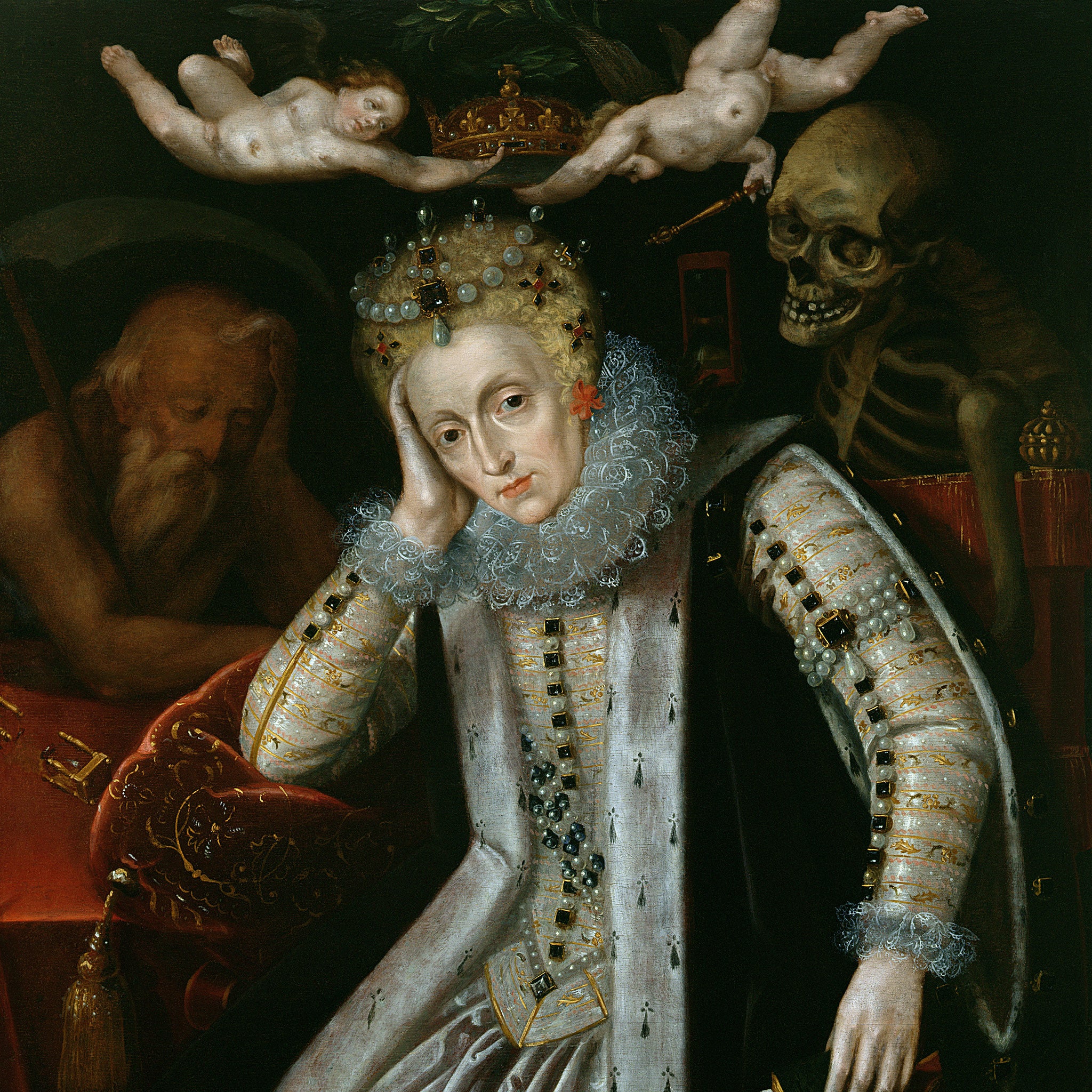Elizabeth I: Renaissance Prince, a Biography by Lisa Hilton, book review: Beneath the skin of the Virgin Queen
The portrait on the cover of this book was painted posthumously; only once she was dead could her true humanity be exposed

The cover of Lisa Hilton’s new biography of Elizabeth I shows the aging queen juxtaposed with a deathly skull, an intriguing portrait which tells us the author intends to get beneath the translucent skin of the Virgin Queen.
In this book, which draws on new research from Italy, France, Russia and Turkey, the clichéd image of “a bewigged farthingale with a mysterious sex life” is replaced with Elizabeth, the Renaissance prince.
The queen used her femininity when convenient but also transcended it. Distinguishing between the “body natural” and the “body politic”, Elizabeth saw herself primarily as a prince because royalty negated gender. During her reign she skilfully shaped her image and the nation, turning an isolated, impoverished island kingdom into a world power, and herself from a mortal into a goddess. She was a true Machiavellian Prince, doing what she needed to survive in a dangerous world where religious conflicts, conspiracies and political assassinations tore Europe apart.
Hilton’s biography manages an impressive balancing act; while eruditely analysing Renaissance ideas and Elizabethan realpolitik it retains all the sexiness we have come to expect from books about the Tudors. Given the humanist education of a prince, Elizabeth was a scholar who eloquently crafted her own speeches. However, she was no blue- stocking; she used her sexuality to get what she wanted both for herself and her country.
Throughout her life she enjoyed the seductive game of courtly love. As a teenager she flirted with Thomas Seymour, the husband of her stepmother, Katherine Parr. Hilton describes “what in modern eyes would be regarded as very unwholesome sex games between the three.” Katherine held Elizabeth’s arms behind her back as Seymour tore her gown into a hundred pieces.
But Elizabeth’s one true love was Robert Dudley, her “sweet Robin.” As he knelt before her to be ennobled as the Earl of Leicester, she flirtatiously stroked his neck. Even he stood no chance of marrying her though, because Elizabeth had already decided she should remain the Virgin Queen. At her coronation she wore her red-gold hair loose as a sign of her virginity and portrayed herself as wedded to her country and her religion. Marriage was about diplomatic manoeuvres not love matches. Creating international intrigue, her suitors ranged from her brother-in-law, King Philip of Spain, to the French Duke of Alençon, who was very short and sported a beard to conceal his smallpox scars.
Reflecting her training in the history of art, Hilton is particularly good at describing how Elizabeth created an immediately recognisable image and then presented it through portraits rich in allegory. The queen often compared herself to an actor on a stage and to play her role she needed magnificent costumes.
Owning more than 3,000 dresses in damask, silk and velvet, she used her clothes to signify her status. In the 1570s she adopted the masculine fashion of doublets and jerkins to reposition herself as a martial prince rather than a marriageable woman.
Her make-up was equally subversive; creating her porcelain skin by applying egg white, borax and ground alabaster, she turned herself into a work of art. Drawing on religious iconography, in her portraits she appeared immutable and thus immortal. Her apotheosis was the Armada picture of 1588, celebrating England’s victory over Spain; she was the divine “Gloriana”, whose hand confidently placed on the globe implied that she controlled even time and space.
During her lifetime any portrait which suggested she was aging was suppressed. However, the portrait on the cover of this book was painted posthumously; only once she was dead could her true humanity be exposed.
Join our commenting forum
Join thought-provoking conversations, follow other Independent readers and see their replies
Comments